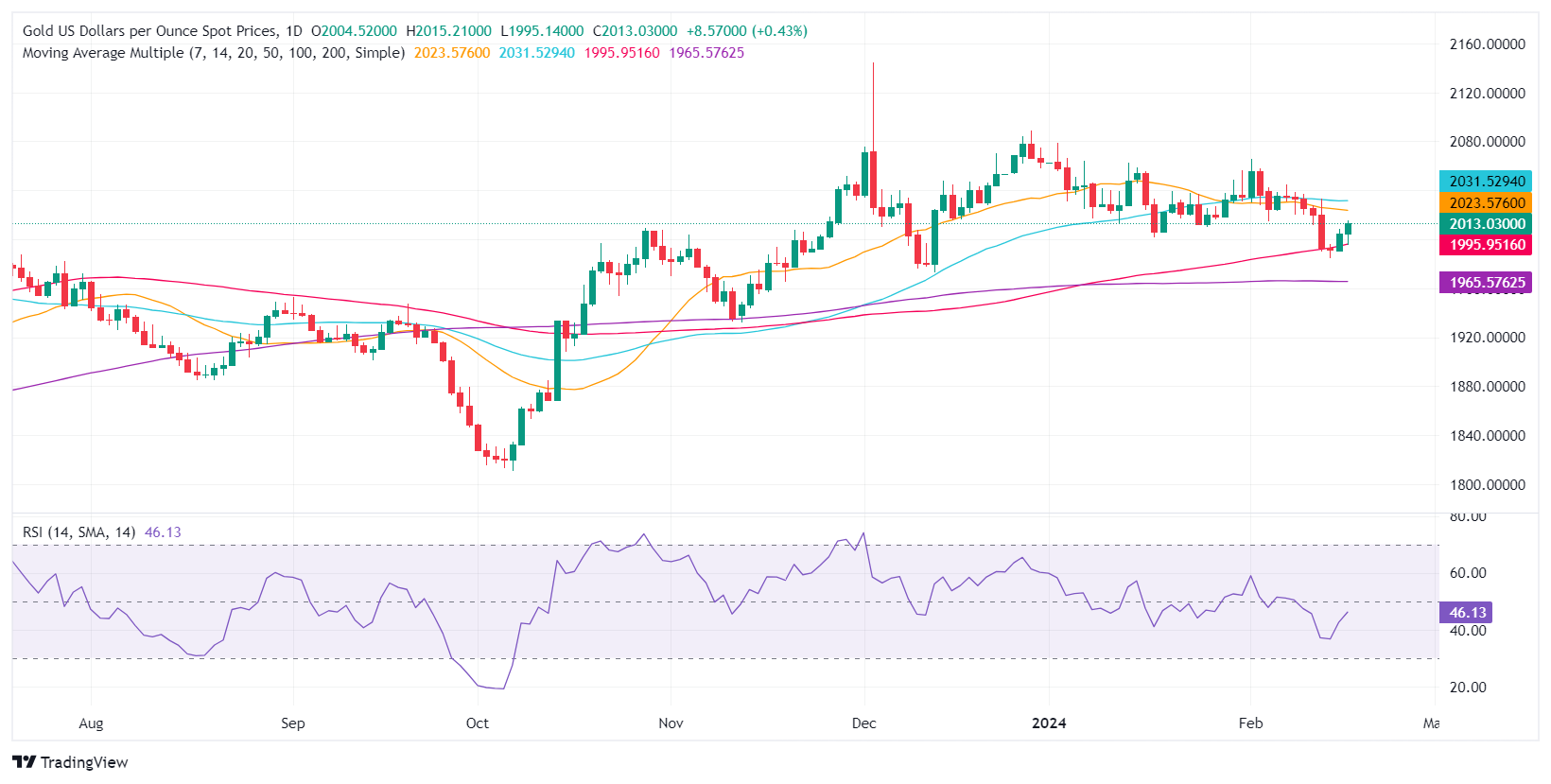Gold Price Forecast: XAU/USD hits three-day high amid inflation concerns, Fed’s policy signals
- Gold hits $2015, benefiting from a softer Dollar and higher US Treasury yields amid persistent inflation signs.
- US PPI and Core PPI surpass forecasts, indicating ongoing inflation and complicating Fed's targets.
- Hints of future rate cuts from Fed officials sway market outlook, enhancing gold's attractiveness as a hedge against policy ambiguity.
Gold price extended its gains for two straight days, hitting a three-day high at $2015 as the Greenback tumbled, despite US Treasury yields rising. US economic data suggests inflation is stickier than expected, though Federal Reserve’s officials opened the door to ease policy.
XAU/USD roses as US Data highlights inflation persistence, Fed officials suggest patience’s required
The XAU/USD exchanges hands at $2012.14, up 0.39%. US data from the US Department of Labor revealed that prices paid by producers rose above estimates, indicating that the US Federal Reserve still has work to do to curb inflation. The Producer Price Index (PPI) in January came at 0.9%, above estimates but shy of December’s 1%. Core PPI jumped sharply by 2%, exceeding the consensus and the previous month's data.
At the same time, US housing data witnessed Housing Starts plummeting -14.8%, from 1.562M to 1.331M, while Building Permits slumped -1.5%.
Meanwhile, the first Consumer Sentiment poll by the University of Michigan (UoM) noted that Americans remain optimistic about economic conditions. The index improved from 79.0 to 79.6, while inflation expectations for one year edged up to 3%, while for a five-year period, it stood unchanged at 2.9%.
The non-yielding meal edged higher, even though US Treasury bond yields, namely the 10-year benchmark note rate, rose six basis points to 4.29%, failing to underpin the Greenback.
Meanwhile, Federal Reserve officials crossed the wires, with Atlanta’s Fed President Raphael Bostic and San Francisco Fed President Mary Daly, leading the pack. Bostic said patience is required and foresees two rate cuts, which could begin in the summer if the data justifies it. Daly commented there’s work to do, adding “We will need to resist the temptation to act quickly when patience is needed and be prepared to respond agilely as the economy evolves.”
Both acknowledged that inflation has a downward trend but remain cautious about the timeline of beginning to ease policy.
Given the fundamental backdrop, Gold price would remain adrift to the outlook of the US economy. If inflation picks up, that could spark a jump in US Treasury bond yields. Therefore, further XAU/USD downside is expected. Conversely, if inflation continues to converge to the Fed’s 2% goal, that could open the door to rate cuts, which would weigh on the Greenback’s appeal. This means the XAU/USD upside is estimated.
XAU/USD Price Analysis: Technical outlook
Gold price is set to finish the week with losses, even though has recovered some ground. According to the daily moving averages (DMAs), XAU’s is upward biased, but since reaching $2088 on December 28, it has printed successive series of lower highs/lows, opening the door for further downside. If XAU/USD prints a daily close below $2000, that could sponsor a leg-down to the 100-DMA at $1996.10, followed by the December 13 low of $1973.13. A breach of the latter will expose the 200-DMA at $1965.46. On the upside, first resistance emerges at the 50-DMA at $2031.98.


